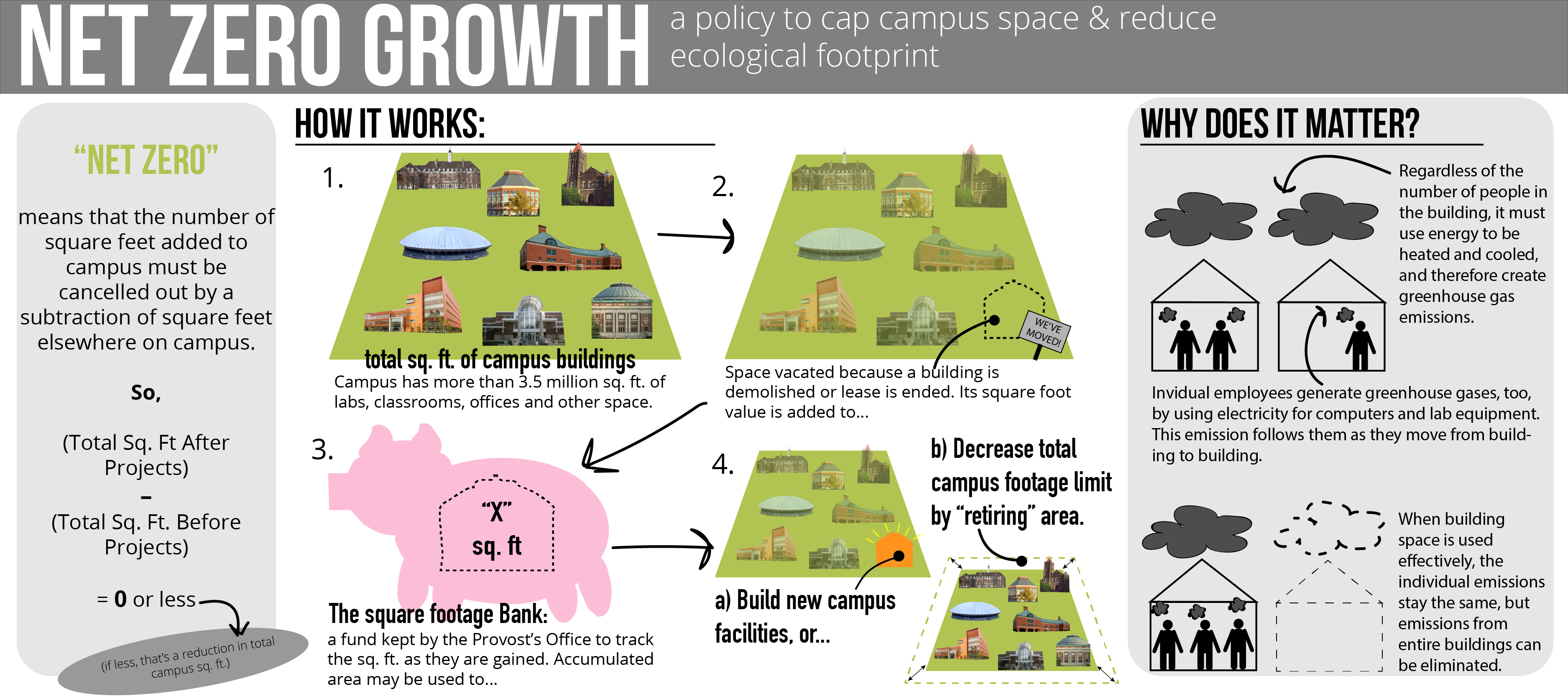In July 2015, the University of Illinois’ Urbana-Champaign campus enacted a Net Zero Space Growth Policy — effectively putting a ceiling on the total area of the building space campus may own or occupy at about 23 million square feet. In addition to curbing sprawl, campus also hopes to restrain runaway carbon emissions from ineffective space use.
The policy explained
(Click image for a larger view)
The bigger picture: Carbon neutrality
The Illinois Climate Action Plan (iCAP) commits the Urbana-Champaign campus to carbon neutrality — a state when campus operations release no net carbon emissions into the atmosphere each year — by 2050, if not sooner. To reach that goal, campus needs to vastly reduce the amount of greenhouse gases it emits into the atmosphere.
The Net Zero Space Growth Policy accounts for about one-third of the reductions in greenhouse gas emissions (see red wedge below) required for campus to reach carbon neutrality.

2015 iCAP Wedge Diagram showing energy emissions projected, with potential clean energy scenario. For further discussion of this diagram, see page 17 in the 2015 Illinois Climate Action Plan. Download a copy at /icap.
The iCAP Wedge Diagram shows one potential combination of tactics for campus to reach its zero net emissions goal. The topmost edge of the red wedge represents the business-as-usual trajectory of campus emissions if no actions are taken to rein in energy consumption by buildings and individual users. Each of the colored wedges represents an estimated reduction of emissions as that tactic is enacted over time.
Roughly 88 percent of campus’ greenhouse gas emissions result from the production and purchasing of steam and electricity to heat, cool, light, and power campus buildings. Capping total campus building space brings foreseeable increases in energy demand (and therefore increases in emissions) to almost zero. This takes the red wedge off the diagram and makes the top orange line the new trajectory, a much flatter and less harmful one.
“A lot of spaces on campus are not used as effectively as they could be,” said Ben McCall, Associate Director for Campus Sustainability at the Institute for Sustainability, Energy, and Environment (iSEE). “The key with this policy is to continue to grow the University’s research and educational missions, but do so in a way that shows good stewardship of already existing campus resources and future environmental resources.
“It’s very hard to imagine meeting our carbon neutrality goal without a policy like this. Even if we had the cleanest, most efficient energy possible, if the spaces that use that energy continue to increase, we’ll always be on the back foot — always searching for additional sources of energy. That will be costly, and it may not be able to happen without some fossil fuel use — which is something the Illinois Climate Action Plan is very clear that we are to wean ourselves from.”
— Olivia Harris, Communications Assistant
